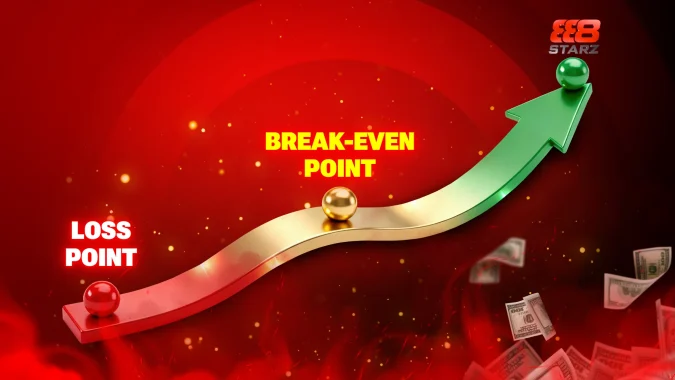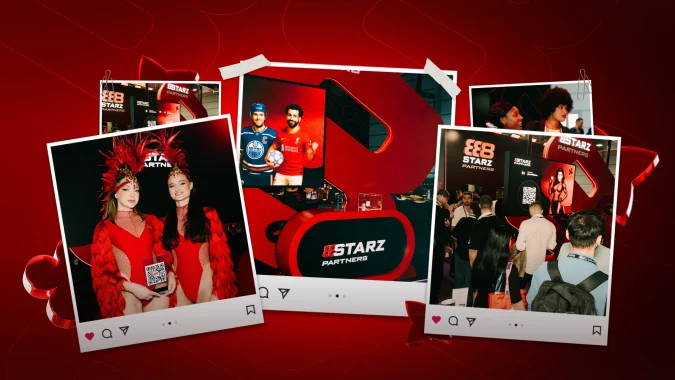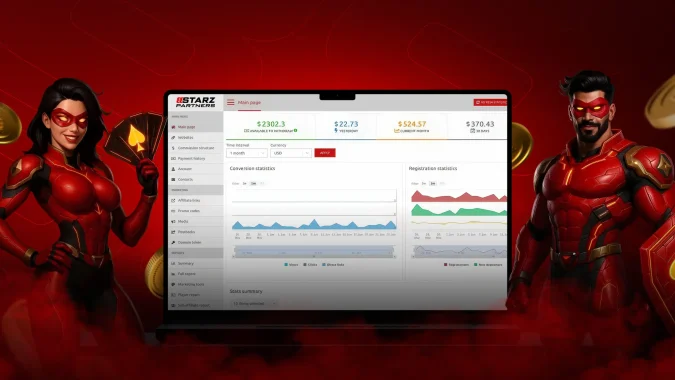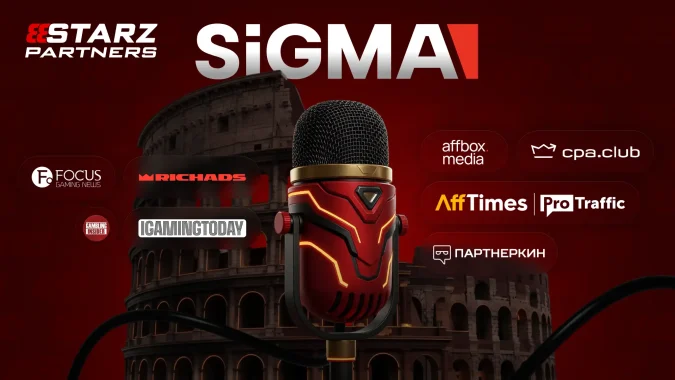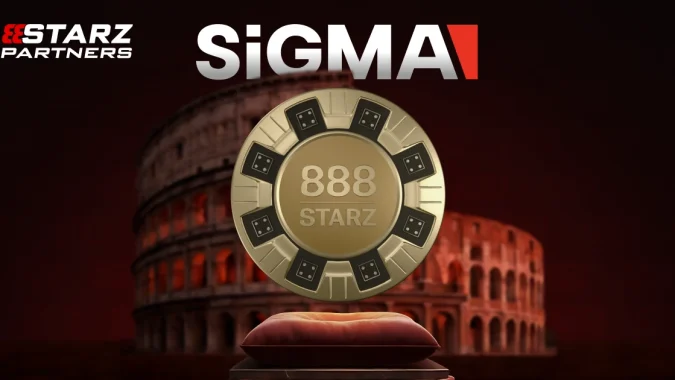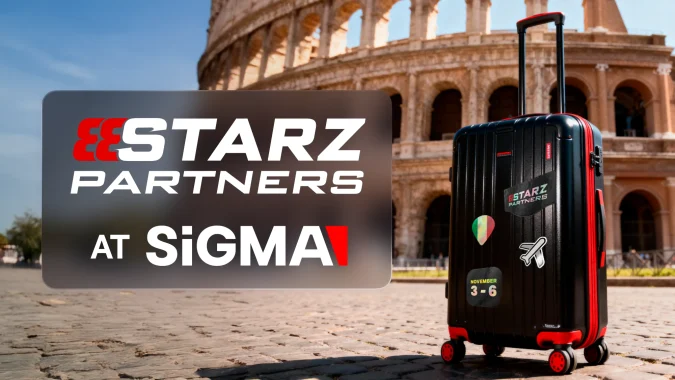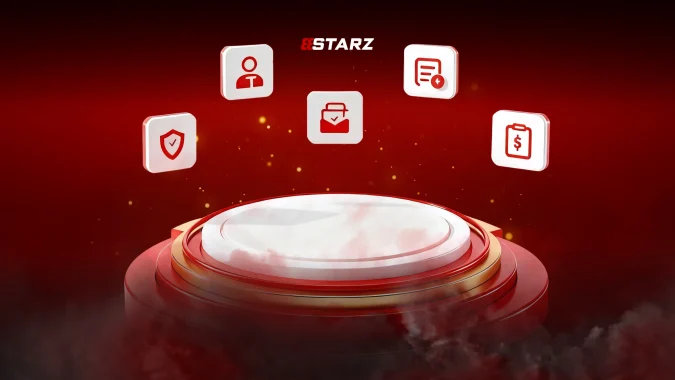Popunder Ads for Affiliates: What It Is, How It Works, and Why It’s Still Profitable

- What is Popunder advertising?
- Benefits of Popunder
- Disadvantages of Popunder ads
- Is Popunder advertising effective?
- How do you choose an offer for Popunder advertising?
- Promoting iGaming via Popunder
- How to choose a Popunder network
- Basics of launching a Popunder campaign
- Test multiple landing pages at the same time
- Don’t forget about campaign optimization
- Separate PC and mobile campaigns
- Launch your campaign on premium sources
- Use a tracker to block suspicious traffic
- Whitelists
- Use automated rules for automatic optimization
- Set a limit on the frequency of impressions
- What else can help you succeed with a Popunder advertising campaign?
- Conclusion
- FAQ
Popunder is considered one of the oldest advertising formats — it is over 20 years old. Because of this, many people think. Popunder is no longer relevant, but in fact, it is still competitive even in comparison with SMM or contextual advertising. In this article 888STARZ Partners team specialists will analyze how this type of advertising works, its advantages and disadvantages, and share strategies to increase profits with Popunder.
What is Popunder advertising?
Popunder is an advertising format in which the ad opens in a new window under the current tab of the user’s browser. Unlike annoying popup ads, such banners do not interrupt user actions and do not cover the main content, as they are visible only after closing the page, which makes them less annoying and more native. Popunder banners open with any user action, be it scrolling, clicking, or hovering over page blocks. Popunder ads use cookies to track conversions.
Benefits of Popunder

Let’s break down the benefits of popunder advertising:
- Low cost of traffic. Popunder is usually paid by the CPC (pay-per-click) system. The price usually ranges from $0.01 to $0.10, which is much more favorable than running Facebook ads or push notifications. The cost per click will depend on the Tier of the targeted region.
- High traffic volumes. The reach of Popunder ads can reach millions of impressions per day, even in Tier-1 regions, allowing you to scale your ad campaign effectively.
- Targeting capabilities. Popunder ads can be conveniently targeted by GEO, user devices, display time, and run retargeting. This will significantly increase the quality of traffic attracted to the offer.
Disadvantages of Popunder ads

The disadvantages of popunder ads stem from their advantages:
- Low quality traffic. Because popunders are triggered automatically, they often result in a high number of accidental clicks, which reduces conversion. Also, the audience often leaves the site immediately after the ads close. In addition, often clicks on Popunder are made by bots, which increases the rate of fraud (15% and higher). To reduce the fraud rate, you should use tools like Pixelate or FraudScore.
- Limited choice of platforms. Most major sites introduce bans on displaying background Popunder banners, and sites that allow popunders often have a poor reputation. Also, Popunder networks usually focus on white niches, though many of them also support gray verticals.
- Blocking by browsers. However, Popunder banners have built-in scripts to bypass blocking, and modern browsers such as Google and Firefox actively enforce protection against background windows, especially when there is no active interaction with the site. However, this can be easily circumvented by implementing Popunder activation triggers for button clicks rather than random page areas. Domain rotation and HTTPS protocols will also help.
Is Popunder advertising effective?
Many webmasters consider Popunder an outdated format due to high fraud, untargeted clicks, and distrust of the audience. However, if Popunder had been ineffective, it would have long ago fallen into oblivion, being replaced by other advertising formats. Its effectiveness is due to a simple combination of low cost per click and massive reach. For 10,000 clicks, about 1500 of which may be untargeted, you need to pay only $500. Even new affiliates can profit from it.
How do you choose an offer for Popunder advertising?
Despite the good efficiency, not all providers will be suitable for Popunder advertising. Users only see popunders after closing the main page, which can lead to a negative reaction. Because of this, you should not use Popunder ads to promote offers that require purchasing goods/services or making a deposit. Promoting offers that require a free subscription, filling out a form, or installing an app is better — the simplest target action.
Promoting iGaming via Popunder
Working with gambling offers through popunder ads requires taking into account legal nuances. For example, in countries like Great Britain or Malta, where gambling is legalized, betting advertising is allowed, but it must comply with strict rules — a ban on display at certain times and limits on deposits. With creatives, everything is no less complicated — if, with more native traffic sources, you need to consider the specifics of GEO, then Popunder usually uses an aggressive approach. This helps maximize clicks and improve the chances of reaching and converting the target audience.
Thematic banners with slots for gambling or soccer attributes for betting are a good fit. You should also use aggressive CTAs like “100% bonus on first deposit”, “Betting with x10 multiplier,” and “Your bet has won! Take €500.” When running iGaming offers through popunders, ROI can reach 200-300% at CPC €0.02-0.05, but up to 40% of traffic can be lost due to blockages and high fraud.
How to choose a Popunder network
You can find a lot of popular platforms on the web, but not all of them are suitable for a profitable launch of an advertising campaign. First of all, you should pay attention to the available payment models. Usually, popunder networks offer one of three models:
- CPC (price per click) — payment for each click;
- CPM (price per thousand impressions) — payment for 1000 impressions (the most popular model);
- CPA (price per action) — payment per targeted action on the landing page.
In addition to the payment model, you should also take into account the traffic volume in different GEOs, the availability of tools to reduce fraud, and the functionality to automate optimization. Otherwise, managing Popunder’s huge reach will be problematic. Also, be sure to check the list of available verticals and the availability of convenient payment methods, such as cryptocurrency or bank cards.
Basics of launching a Popunder campaign

Now that we’ve covered the ins and outs of running popunder ads, we’ll share a few tips that will help make your campaign much more effective:
Test multiple landing pages at the same time
The A/B testing methodology of preloading pages allows you to compare different versions of pages, identifying the most effective variants. This is done using analytics tools such as Google Optimize or Unbounce to help track user behavior and conversion rates. Key elements to test are headlines, images, calls to action, and color schemes. The timing of testing depends on the traffic: allocating at least 7-14 days to get statistically significant results is recommended, and the budget should be distributed evenly between all variants to avoid skewing the data.
Don’t forget about campaign optimization
Optimizing popunder campaigns takes several steps: analyzing current metrics, adjusting bids, updating creatives, and targeting. Key metrics to track are CTR, conversion, cost per lead, and ROI. Optimization should be done regularly, at least once every 3-5 days, to react quickly to changes. Automation tools like Keitaro or Binom simplify the process by allowing you to customize rules to disable ineffective bundles or reallocate budgets.
Separate PC and mobile campaigns
Users on mobile devices are more likely to take impulsive actions, while PC owners tend to look at offers in more detail. Setting up mobile campaigns requires adapting creatives for small screens, simplifying application forms, and speeding up loading pages. Landing pages need to be optimized for touch interfaces, and targeting needs to take into account geolocation and mobile operators. This separation increases the relevance of advertising and reduces the cost of conversion.
Launch your campaign on premium sources
Premium sources are proven sites with high conversion rates and quality traffic, such as significant media resources or thematic portals. Their advantage is stability and minimal amount of fraud, but the cost of traffic here is higher than on standard sources. Here are some of the most popular, proven popunder networks:
- Clickadu.
- PopCash.
- AdMaven.
- PropellerAds.
- AdCash.
Use a tracker to block suspicious traffic
Trackers like RedTrack, Voluum, or Keitaro help monitor traffic sources and detect bots and fraudulent clicks. Integration with Popunder networks allows you to block suspicious IP addresses automatically through filter settings. Regular analysis of geo-data, activity times, and user behavior patterns helps detect anomalies. This reduces the cost of untargeted traffic and increases net revenue.
Whitelists
Working with whitelists means focusing on proven sources that are already showing high conversion rates. Analyzing their effectiveness includes evaluating ROI and traffic stability. Scaling based on whitelists allows you to increase your budget on top sites, minimizing risks. However, it is important to periodically update the lists, adding new sources and excluding outdated ones.
Use automated rules for automatic optimization
Automation tools in popunder networks, such as rules for disabling campaigns at low CTR or increasing bids for top bundles, save time and reduce human error. Setting such rules requires a clear understanding of KPIs: for example, you can set automatic budget increases for sources with conversion rates above 5%. Combining automation with manual control allows you to maintain control over your strategy.
Set a limit on the frequency of impressions
The optimal frequency of impressions depends on the vertical: 3-5 impressions per user per day are acceptable for mass-market products and 1-2 for niche services. Limitation reduces the effect of “banner blindness” and improves CTR. It is essential to balance coverage and efficiency: too strict limits reduce the audience, and too soft limits irritate users.
What else can help you succeed with a Popunder advertising campaign?

In addition to the basic tools for working with popunder ads, you may also need additional services and strategies that will improve performance and help with shedding gray verticals:
- Anti-Detect Browsers. With anti-detect browsers, affiliates can manage multiple ad accounts in one popunder network at once, allowing you to run larger campaigns for multiple GEOs and different target audiences at once.
- Traffic diversification. The process of distributing resources and efforts in several directions to reduce dependence on a single source of income. Helps to reduce the risk of losing money if one of the advertising networks does not bring the desired income
- Unique creatives. Unique creatives will help distinguish your ads from your competitors, increasing coverage and reducing adverse user reactions to the appearance of pop-under banners. To do this, you need to create your creatives through various editors, like Photoshop or Canva, taking inspiration from competitors’ creatives with the help of spy services.
Conclusion
As we have learned, popunder advertising is not only not dead but is thriving, especially when dealing with gray verticals such as gambling and betting. The most important thing is not to risk and use traffic diversification while filtering it from bots and untargeted users in parallel. Otherwise, running popunder companies is not much different from popular push notifications — you must fine-tune targeting, choose the right creatives, test your bundles, and connect a pool of valuable tools.
Do you want to try out the acquired knowledge in practice but can’t find profitable iGaming offers? We have a solution for you — the 888STARZ Partners affiliate program. Our platform offers webmasters a wide range of offers from over 100 GEOs, which can be promoted with popunder ads and many other traffic sources. We also offer individual terms with increased bundles for top affiliates and provide free, localized creatives to all webmasters pouring on our offers.
FAQ
The minimum price per thousand impressions (CPM) depends on GEO, traffic source, and competition. For example, in Tier-3 countries (Asia, Africa), CPM can start from $0.1 to $0.5, and for Tier-1 GEOs (USA, Europe) — from $1 to $4-5.
Which GEOs and verticals are best for popunder?
Tier-1 countries (USA, Canada, Germany) show high ROI for verticals such as finance (credit, crypto), gambling, betting, and mass-market goods. For Tier-2/3 (India, Brazil, Mexico), mobile apps, online gaming, subscriptions, Nutra, and dating are effective.
How can I pay for popunder ads?
Most popunder networks accept cryptocurrencies (Bitcoin, USDT), bank transfers, and electronic payments (WebMoney, PayPal). Some sites work with credit cards. Check the commissions: for example, payment with crypto is often more favorable due to the lack of additional fees.
How do we check traffic volumes for a specific GEO by popunder traffic?
Use affiliate networks’ analytics tools (for example, PropellerAds or Adsterra), which provide statistics on available volumes, or external tools like Google Analytics. You can also run a test campaign with a minimal budget ($10-$20) and collect real-time data.
What is the difference between pop-under and popup?
A pop-under opens in a new tab under the current browser window and does not interfere with the user until he closes the main tab. A popup appears on top of the page, immediately interrupting the interaction. Popunders are considered less intrusive and have a higher CTR.
How to bypass ad blockers when working with popunders?
Use redirects through anti-blocking scripts that change URL parameters. Work with ad formats that are not blocked by default (e.g., direct links instead of banners). Also, choose traffic sources with low blocking rates – for example, adult sites or local portals.
How much money do I need to start with popunder advertising?
The minimum starting budget is $500 (Tier-3). Of that, about $50 will go to test campaigns and $50 for the tracker and analytics tools. The rest of the budget will be spent on scaling successful bundles. Don’t invest all the funds in one source: spread the budget between 3-5 campaigns.
Which offers are not suitable for popunder ads?
Avoid verticals with long decision-making cycles (real estate, B2B services) and offers that require complex verification (for example, loans with strict requirements). Niches with low CTR also perform poorly: educational courses and highly specialized products.




